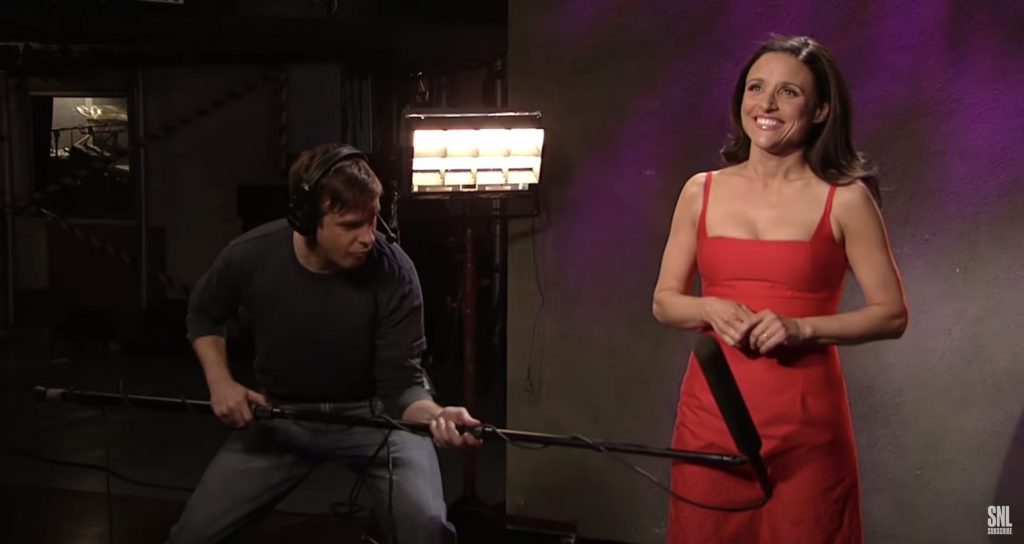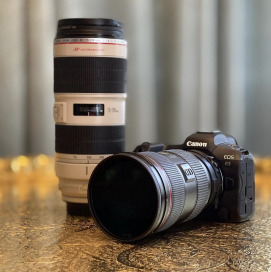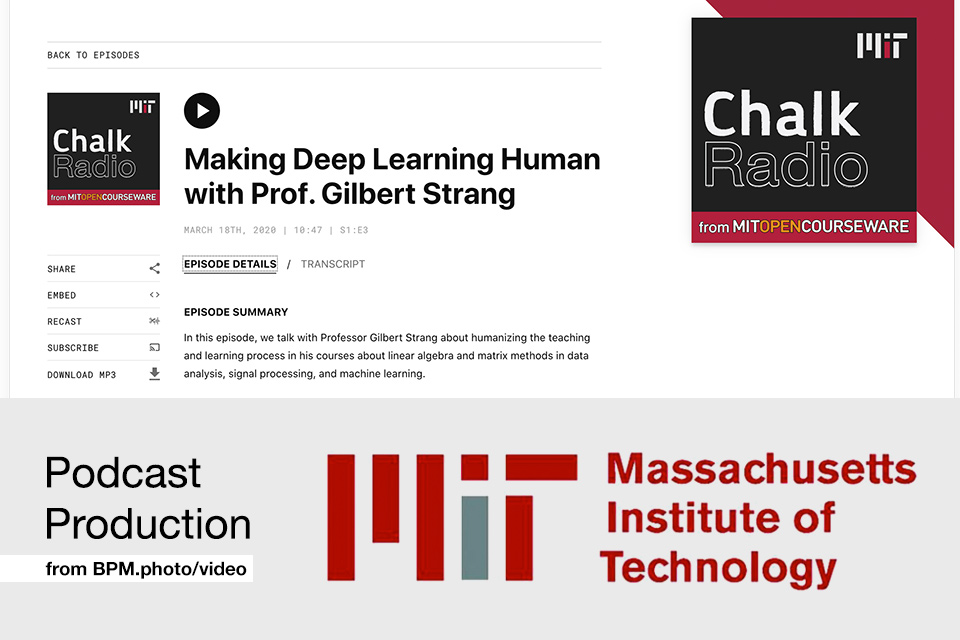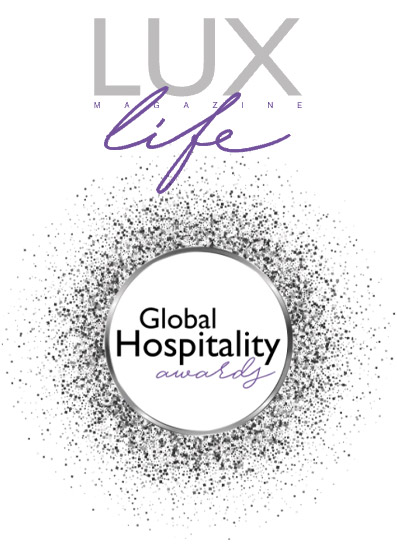I really enjoy designing a series from the ground up. Often it includes branding, show design, set design (for video), purchasing, and training the crew and talent. It can start small and then we add complexity while leveling-up the end product and building the audience.
In today’s hyper-connected media climate, having a dedicated Audio Podcast, and YouTube series, and Instagram content, and Pinterest posts, and Blog posts, and Medium articles, and… and… can be overwhelming and costly.
But it doesn’t have to be.
Repurposing and repackaging your content for various mediums is really the only way you can “do it all.” As long as you initially produce the content with a certain considerations in mind, you can extract gems for almost any delivery medium. It’s best to cover that on a case-by-case basis.
Let’s discuss how to repurpose your content.
Today, we’ll talk about AUDIO PRODUCTION. And how we can help you get that incredibly important part of the equation dialed-in.
I started my professional career in commercial radio.
Remember terrestrial radio? Back in 2003, 99.1 WHFS was the most popular rock station in Washington, DC. It was similar in spirit to San Diego’s 91x and similar in budget to 106.7 KROQ in LA.
I worked as a board operator (DJ who doesn’t talk), remote broadcast operator (in-studio hands-on producer while hosts were at concerts), audio editor and “imaging” assistant. Imaging is all of the stuff you hear between songs that are not paid commercials; including all station-specific promos, show intros/outros, concert announcements, silly movie clips (called “drops”), the Beastie Boys saying, “you’re listening to 99.1 HFS!” etc.
It was really fun for 20-year-old me. Though the station folded to buyouts and format changes, it gave me a solid foundation after my years in college radio as a DJ and host and my station’s Production Director.
Recording people speaking is among the most fundamental, but not simple, forms of audio production.
You could say that I have an ear for it.
Aside from the hundreds of video interviews and dozens of live conference events I’ve worked, I’m a lifelong musician with many hours spent producing music both in studios and at home. And I also used to run live sound at a small music venue. More recently, before the pandemic, I’d help set up and mix the sound for my own bands at restaurant gigs, blending the vocals and instruments.
Basically, I think a lot about sound. And how it can turn your audience off almost immediately if done poorly.
Podcasts are often essentially video interviews minus the visual element.
Many podcasts are actually repurposed content from videos as well. (In fact: this blog post draws a lot from a recent email I sent to prospective client.)
It is so much more efficient, in terms of cost, time, and bandwidth, to produce one thing and repackage it for other uses and delivery methods. But to do so, you need to plan ahead and be sure certain steps are part of your process.
While there are specific content, timing, structure, format, and equipment considerations for an audio-only podcast, many qualities of a “good episode/show” are universal.
Things like audio quality, vocal performance, interview etiquette and discipline, the pace of the information, the order in which info is presented, a show’s appealing opening and closing, and the consistency in which you deliver these things to your audience throughout a season.
Check out this audio podcast that I produced for MIT.
Yes, I mean the Massachusetts Institute of Technology.
https://chalk-radio.simplecast.com/episodes/making-deep-learning-human-with-prof-gilbert-strang
My role was to compile, clean up, and edit the podcast using:
- Raw audio recordings from an interview (lots of noise, not-ideal mic placement and settings, plenty of rambling)
- Host voiceover recording (done in a studio environment afterwards)
- Music (client provided)
- Interview transcript with client’s notes for edits, though many edits were made using my judgement, including smoothing the guest’s pace
Audio is a huge part of everything I work on.
Turn-key Voiceovers. Although there’s a trend of clients moving toward using their in-house subject-matter-experts, I have lots of experience recording my own voiceover. My home setup includes a professional studio condenser mic, outboard tube compressor, professional studio monitors (basically fancy speakers), and an acoustically tuned room with sound treatments (basically fancy foam and strategically placed decor).
Voiceover Coach. I have elearning video clients where I coach their SMEs on how to record better audio for their courses; including equipment recommendations and consultations on setup and usage, best practices, file prep, etc. Some people are naturals, though many others need coaching and encouragement.
Audio for Videos. I have designed a dozen video studios ranging from home setups to executive office suites to warehouse sound stages – all with many audio considerations and solutions in place.
For every single video I produce, regardless of how the audio was recorded, I optimize the tone and levels, removing unwanted noise, making harsh voices more pleasant, bolstering weak voices, etc. Somehow many video producers don’t seem to value or finesse their audio as much. But I have found that audio can make or break a video production.
Boom! Occasionally I still join a film project as Sound Mixer. That’s the often-lampooned crew member with the boom pole and headphones who is responsible for capturing the actors’ dialog and all of the environmental sounds in a scene.
 |  |
| Jason Sudeikis torments Julia Louis-Dreyfus on SNL | Jimmy Fallon cries uncontrollably on the Tonight Show |
I’ll leave you laughing. Comedian Kevin James has a series of spoofs where he plays the Boom Operator in famous films. These are a killer example of green screen and expert timing, not to mention color grading, rotoscoping, sound mixing, etc. Enjoy!
Let’s get your content’s audio dialed-in.

Browse the Categories
Have Questions?
From Client Reviews
I can't stress enough just how comfortable he made us feel on camera. He was calm, patient and got us to great result.
Brendan is a rockstar director! He made our executives look like real actors.
Even under crazy conditions Brendan nailed it. We're blown away with the shots he delivered!
It was a beautiful shoot! Working with Brendan was so easy and he got the lighting perfect. The final product was better than I imagined.
He didn't make anything feel forced or staged. I am really, really happy with the pictures he took because they came out looking very natural.
Brendan was so personable and easy going while maintaining the utmost professionalism, which was a nice change from photographers I've worked with in the past.
I would recommend working with Brendan if you want to feel comfortable and want professional, amazing images.
more




